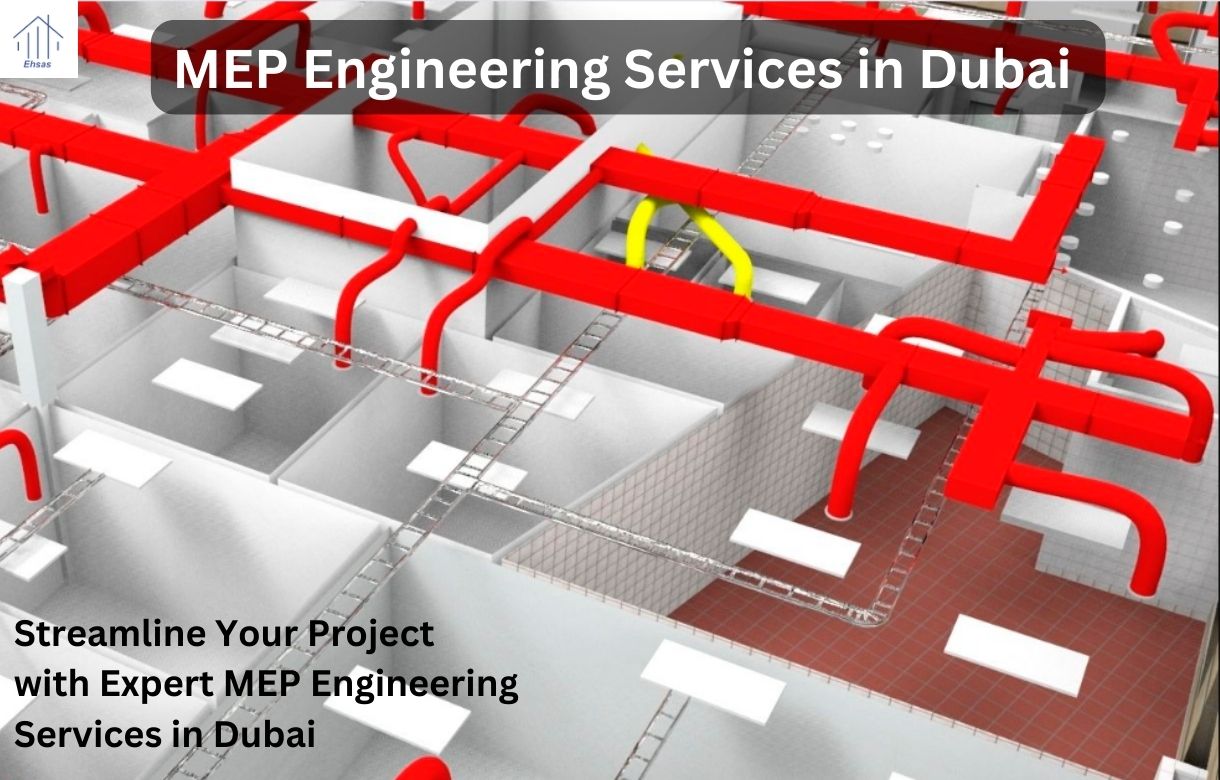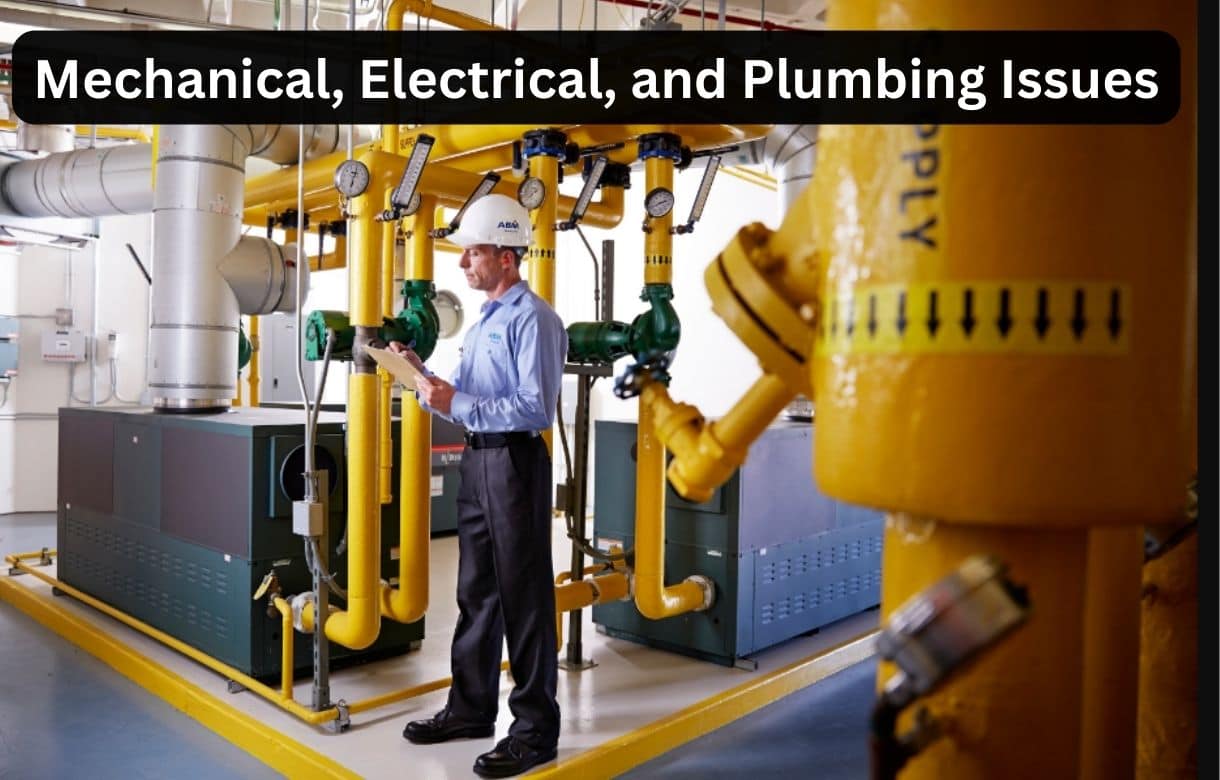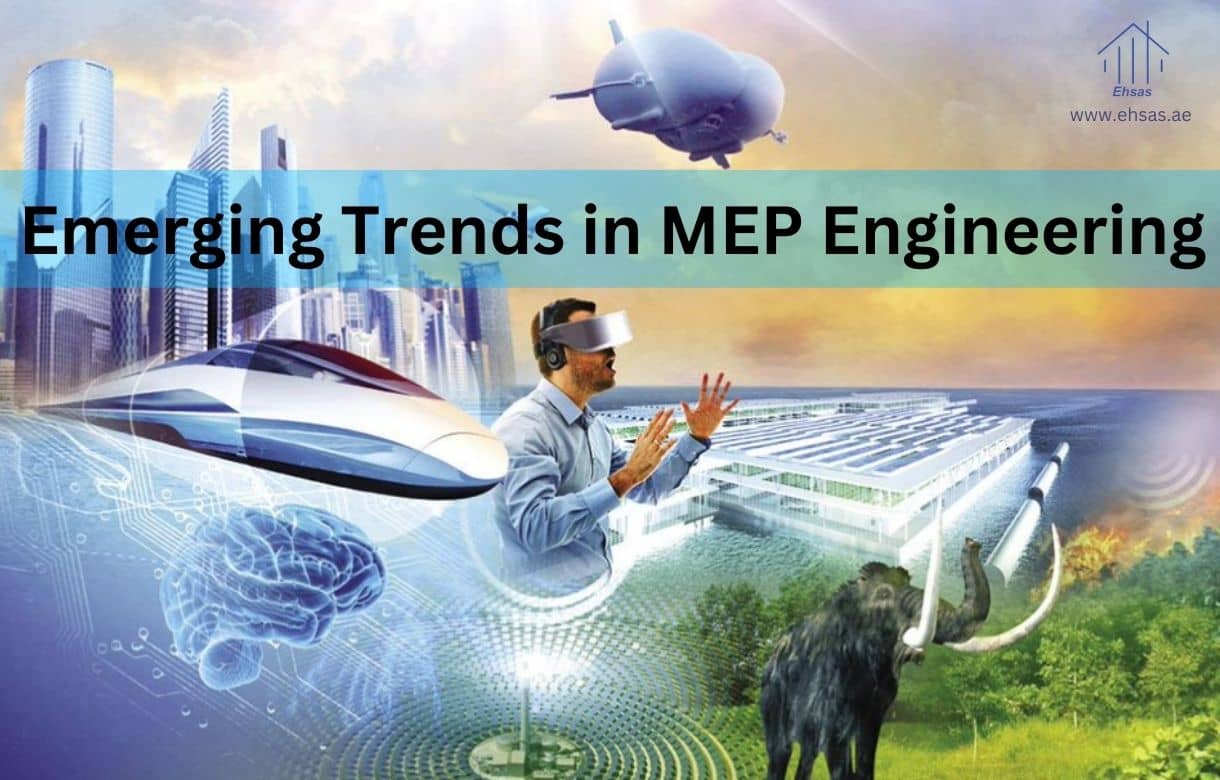Introduction
In the realm of construction, the term “Civil MEP” stands for Mechanical, Electrical, and Plumbing systems integrated into civil engineering projects. These components are critical to the successful completion and functionality of modern buildings and infrastructure. The civil engineers of Ehsas Technical and Cleaning Company LLC follow all the modern trends of Civil MEP. This article explores the significance of Civil MEP, its components, design considerations, and its impact on the construction industry.
Components of Civil MEP
Civil MEP encompasses three primary systems:
1. Mechanical Systems
Mechanical systems in construction include heating, ventilation, and air conditioning (HVAC) systems, elevators, escalators, and other machinery essential for the operation of a building. These systems ensure thermal comfort, air quality, and efficient movement within structures.
HVAC systems are vital for maintaining indoor air quality and thermal comfort. They consist of components like boilers, chillers, air handling units, and ductwork. The design of these systems must consider factors such as energy efficiency, environmental impact, and occupant comfort.
Elevators and Escalators
Elevators and escalators are crucial for vertical transportation in multi-story buildings. They require precise mechanical design to ensure safety, reliability, and efficiency. The integration of these systems into the building’s overall design is a complex task that requires coordination between civil and mechanical engineers.
2. Electrical Systems
Electrical systems power the entire building and include lighting, power distribution, fire alarms, and communication networks. These systems must be designed to meet the demands of modern technology while ensuring safety and reliability.
Power Distribution
Power distribution systems deliver electricity from the utility provider to various parts of the building. This includes transformers, switchboards, circuit breakers, and wiring. Proper design ensures that the electrical load is balanced and that there is adequate power for all building operations.
Lighting Systems
Lighting systems are essential for both functionality and aesthetics. They include general lighting, emergency lighting, and specialized lighting for specific tasks. Energy-efficient lighting design can significantly reduce the operational costs of a building.
Fire Alarm and Communication Systems
Fire alarm systems are critical for the safety of building occupants. They include smoke detectors, fire alarms, and sprinkler systems. Communication systems, including telecommunication and data networks, are vital for the functionality of modern buildings.
3. Plumbing Systems
Plumbing systems ensure the supply of clean water and the removal of wastewater. They include water supply systems, drainage systems, and gas piping. The design and installation of plumbing systems must comply with health and safety standards.
Water Supply Systems
Water supply systems provide potable water for drinking, cooking, and sanitation. They include pumps, pipes, and fixtures. Proper design ensures a reliable and clean water supply.
Drainage Systems
Drainage systems remove wastewater and rainwater from the building. This includes sewer lines, stormwater drains, and vent systems. Effective drainage design prevents flooding and water damage.
Gas Piping
Gas piping systems deliver natural gas or propane for heating, cooking, and other uses. They require careful design to prevent leaks and ensure safety.
Design Considerations for Civil MEP Systems
The design of Civil MEP systems involves several critical considerations:
1. Integration with Architectural Design
Civil MEP systems must be seamlessly integrated into the architectural design of the building. This requires close collaboration between architects, civil engineers, and MEP engineers. The placement of mechanical rooms, electrical panels, and plumbing chases must be planned to optimize space and functionality.
2. Energy Efficiency
Energy efficiency is a key consideration in modern construction. MEP systems must be designed to minimize energy consumption and reduce the building’s carbon footprint. This includes the use of energy-efficient HVAC systems, LED lighting, and water-saving plumbing fixtures.
3. Compliance with Codes and Standards
Civil MEP systems must comply with local building codes and standards. This ensures the safety, reliability, and sustainability of the building. Codes and standards govern aspects such as fire safety, electrical installations, and plumbing systems.
4. Sustainability
Sustainability is becoming increasingly important in construction. This involves the use of environmentally friendly materials, renewable energy sources, and systems that reduce water and energy consumption. Sustainable MEP design can achieve certifications such as LEED (Leadership in Energy and Environmental Design).
5. Cost Efficiency
While designing MEP systems, cost efficiency is a critical factor. This includes not only the initial installation costs but also the long-term operational and maintenance costs. Efficient design and smart choices in materials and systems can lead to significant cost savings over the life of the building.
Impact of Civil MEP on the Construction Industry
Civil MEP systems have a profound impact on the construction industry, influencing the design, construction, and operation of buildings.
1. Improved Building Performance
Well-designed MEP systems improve the overall performance of buildings. This includes better energy efficiency, improved indoor air quality, and enhanced occupant comfort. High-performing buildings are more attractive to tenants and can command higher rents and property values.
2. Technological Advancements
Advancements in technology are continually shaping MEP systems. The integration of smart building technologies, such as IoT (Internet of Things) sensors and automation systems, allows for more efficient management and operation of building systems. This leads to lower operational costs and improved sustainability.
3. Project Delivery and Management
The integration of Civil MEP systems into the overall project management process is essential for the successful delivery of construction projects. This includes the use of Building Information Modeling (BIM) to coordinate MEP design with other building systems. BIM allows for better visualization, clash detection, and collaboration among project stakeholders.
4. Maintenance and Operations
The design of MEP systems significantly impacts the maintenance and operation of buildings. Systems that are easy to access and maintain can reduce downtime and repair costs. Properly designed MEP systems also extend the lifespan of building components.
5. Regulatory Compliance
Adhering to regulatory requirements is crucial in construction. MEP systems must meet stringent codes and standards to ensure safety and compliance. This includes fire safety regulations, electrical codes, and plumbing standards. Non-compliance can lead to costly penalties and project delays.
Future Trends in Civil MEP
The future of Civil MEP is shaped by emerging trends and technologies:
1. Smart Buildings
Smart buildings use advanced technologies to enhance the functionality and efficiency of MEP systems. This includes the use of sensors, automation, and data analytics to optimize building performance. Smart buildings can adapt to the needs of occupants and reduce energy consumption.
2. Renewable Energy Integration
The integration of renewable energy sources, such as solar panels and wind turbines, into MEP systems is becoming more common. These trends help to reduce the usage of fossil fuels that ultimately decrease the carbon footprints. Renewable energy systems also provide cost savings over time.
3. Prefabrication and Modular Construction
Prefabrication and modular construction techniques are introducing new methodologies in the construction industry. MEP components can be prefabricated off-site and assembled on-site, reducing construction time and improving quality control. This approach also minimizes waste and disruption at the construction site.
4. Advanced Materials
The use of advanced materials, such as high-performance insulation and low-emissivity glass, enhances the efficiency of MEP systems. These materials improve energy efficiency, reduce heat loss, and enhance occupant comfort.
5. Integrated Design and Delivery
Integrated design and delivery approaches, such as Design-Build and Integrated Project Delivery (IPD), promote collaboration among project stakeholders. This leads to better coordination of MEP systems with other building components, resulting in more efficient and cost-effective projects.
Conclusion
Civil MEP systems are the backbone of modern construction projects. They ensure the functionality, safety, and sustainability of buildings. The design and integration of these systems require careful consideration of factors such as energy efficiency, regulatory compliance, and cost. As technology advances, the role of Civil MEP in construction will continue to evolve, driving improvements in building performance and sustainability. The future of construction will see even greater integration of smart technologies, renewable energy, and advanced materials, making buildings more efficient, sustainable, and adaptable to the needs of their occupants.









I’m extremely inspired together with your writing talents and also with the format for your weblog. Is that this a paid topic or did you modify it your self? Either way stay up the excellent high quality writing, it’s rare to peer a great blog like this one nowadays!